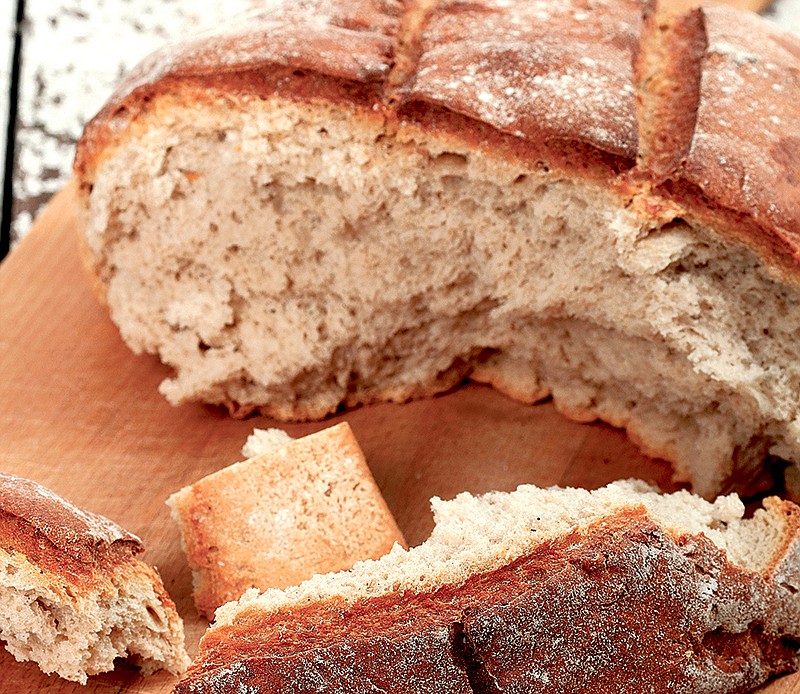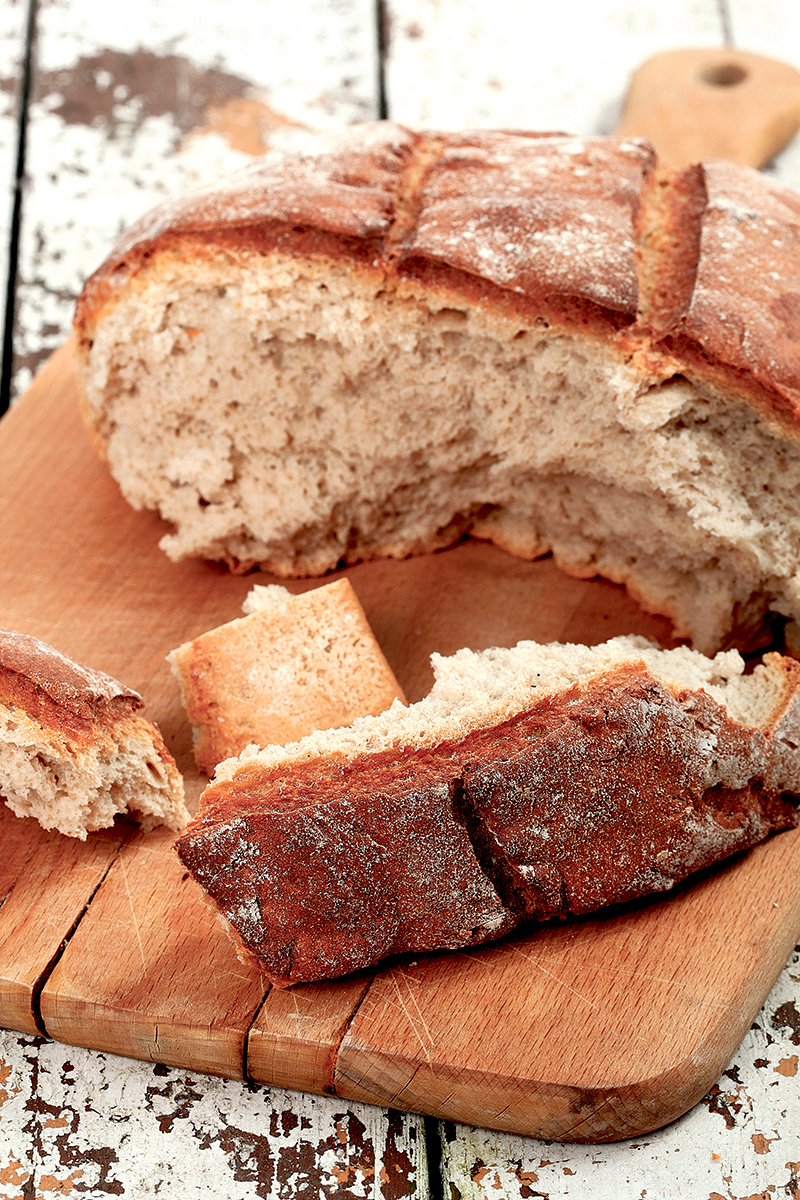To reach us
Fare Exchange is a longtime meeting place for people who love to cook and love to eat. We welcome both your recipes and your requests. Be sure to include precise instructions for every recipe you send. Mailing address: Jane Henegar, 913 Mount Olive Road, Lookout Mountain, GA 30750 E-mail: chattfare@gmail.com
Good morning, readers. Today's requests came from some puzzlements about soup. Simply put, we need suggestions for cooking with Parmesan rinds, and recipes for tomato-Parmesan soup, plain tomato soup, cheese soup, meatball soup and pumpkin bisque.
But the details are not so simple. Brainerd Anonymous began: "I saw a display of Parmesan rinds in a local store, and was told that they add flavor to a pot of soup if cooked in the pot and removed before serving. I tried it and it didn't work. My tomato-Parmesan soup was a disaster. So now I am looking for uses for the other Parmesan rinds I bought, as well as a really tasty tomato soup.
"Also, can your readers recommend a really good recipe for cheese soup and one for meatball soup, or any recipe that is their very favorite soup?"
COFFEE CAKE
In the last part of the last century, the recipes of Baird McClure graced many a local gathering. The one that follows is evidence that a good cook's memory lives on. From E.E. came one of Ms. McClure's favorite given recipes, this one authentically covered with splatters from many makings. This was her traditional Christmas gift, prepared in disposable aluminum pans, and those who remember Baird McClure will recall that her jolly presence was even more welcome than the tasty coffee cake.
Sour Cream Coffee Cake
2 sticks butter
1 cups sugar
3 eggs
2 cups flour
1 teaspoon soda
1 teaspoon baking powder
1 cup sour cream
1 teaspoon almond extract
1 cup brown sugar
1 tablespoon cinnamon
cup chopped pecans
Cream butter and sugar and add eggs.
Sift flour, soda and baking powder and add alternately with sour cream.
Grease and flour three 9-inch aluminum coffee cake pans or small loaf pans. Pour out batter among them.
For topping, mix together brown sugar, cinnamon and pecans. Sprinkle batter with half the topping mixture. Cut this into the batter real good. Sprinkle the remaining topping mixture on the tops.
Bake at 350 degrees about 25 minutes. Serve hot.
This freezes well.
Requests
› How to cook with Parmesan rinds› Recipe for tomato-Parmesan soup› Recipe for plain tomato soup› Recipe for cheese soup› Recipe for meatball soup› Recipe for pumpkin bisque
RYE BREAD
Today's baking theme continues, this time with a savory bread. This recipe, both easy and authentic, came from therecipegrinder.com via the Farm at Windy Hill in Mentone, Ala., and its manager, Tema Flanagan. She uses a Le Creuset Dutch oven for the baking of this bread, which ramps up its authenticity and its deliciousness.
The person who came up with this recipe, Jim Lahey, is the force behind one of New York City's best-loved bread resources, The Sullivan Street Bakery. So instead of some complex kneading technique or fancy bread machine, Lahey reveals that a few very basic ingredients (namely flour, water, salt, and yeast), a simple pot with a lid and plenty of time are all that's required to produce an exceptional loaf of bread.
Of these standard ingredients that last one - time - is worth underscoring because, while there's little actual work involved beyond some minimal measuring and mixing, the trade-off is an acceptance that the process can't be rushed. This means allowing the dough between 12 and 18 hours for the first rise, and another one to two hours for the second. At each of these stages, you'll see the dough increase in size and, during the first round, take on a noticeably different appearance as well, changes that with traditional bread-making recipes would only be achieved through lots of elbow grease.
Easy Rye Bread
Special equipment needed: a 4- to 5-quart heavy pot, oven-safe, with lid
2 cups bread flour
3/4 cup rye flour (plus more for dusting)
1 teaspoons table salt
teaspoon instant or other active dry yeast
1 1/3 cups cool water (55 to 65 degrees)
In a medium bowl, stir together the flours, salt and yeast. Add the water and, using a wooden spoon or your hand, mix until you have a wet, sticky dough, about 30 seconds. Cover the bowl with plastic wrap and let sit at room temperature until the surface is dotted with bubbles and the dough is more than doubled in size, 12 to 18 hours. (Note: When the weather is very cold, a longer period may be necessary for the dough to double in size and for the bubbles to appear - as much as 24 hours).
When the first rise is complete, generously dust a work surface with flour. Use a bowl scraper or rubber spatula to scrape the dough out of the bowl in one piece. Using lightly floured hands or a bowl scraper or spatula, lift the edges of the dough in toward the center. Nudge and tuck in the edges of the dough to make it round.
Place a tea towel on your work surface and generously dust it with rye flour. Gently place the dough on the towel, seam side down. If the dough is tacky, dust the top lightly with rye flour. Fold the ends of the tea towel loosely over the dough to cover it and place it in a warm, draft-free spot to rise for 1 to 2 hours. The dough is ready when it is almost doubled. If you gently poke it with your finger, it should hold the impression; if it springs back, let it rise for another 15 minutes.
Half an hour before the end of the second rise, heat the oven to 475 degrees, with a rack in the lower third of the oven, and place a covered 4- to 5-quart heavy ovenproof pot in the center of the rack.
Using potholders, carefully remove the preheated pot from the oven and uncover it. Unfold the tea towel and quickly, but gently, invert the dough into the pot, seam side up. Use caution, the pot will be very hot. Cover the pot, return to the oven and bake for 30 minutes.
Remove the lid and continue baking until the bread is a deep chestnut color but not burnt, 15 to 30 minutes more. Use a heatproof spatula or potholders to carefully lift the bread out of the pot and place it on a rack to cool thoroughly (about 1 hour).
Note: The bread is best if eaten within 2 or 3 days of baking, and kept at room temperature, wrapped in wax or butcher paper or in a paper bag (i.e. not plastic, which toughens bread and makes it rubbery).
Makes one 10-inch round.
- Adapted from "My Bread: The Revolutionary No-Work, No-Knead Method" by Jim Lahey
Next week is THE week of November. You may have noticed. But every week is Thankful Week around here. So may it be for all of us, on into December and then 2016.


